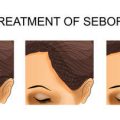Understanding Thread Lifts: The Basics
If you’ve ever found yourself searching for minimally invasive solutions to address signs of ageing, thread lifts have likely appeared on your radar. But what exactly are thread lifts, and why are they becoming a go-to option for many seeking natural-looking facial rejuvenation in the UK? At its core, a thread lift is a non-surgical cosmetic procedure designed to subtly lift and tighten sagging skin. This is achieved by inserting dissolvable threads—typically made from biocompatible materials such as polydioxanone (PDO) or cogged threads—beneath the skin’s surface. These threads create an immediate lifting effect while also stimulating the body’s natural collagen production over time, resulting in firmer, more youthful-looking skin. In recent years, thread lifts have gained significant traction within the UK’s aesthetics community, particularly among those wishing to avoid the downtime and risks associated with traditional facelift surgery. The appeal lies in their ability to deliver noticeable yet understated results, often completed within an hour and requiring minimal recovery. As the demand for subtle enhancements continues to rise across Britain, understanding the fundamentals of thread lifts—and how options like PDO and COG threads differ—is essential for making an informed decision about your aesthetic journey.
PDO Threads Explained: Benefits and Suitability
Polydioxanone (PDO) threads have become a mainstay in the British aesthetic landscape, particularly for individuals seeking minimally invasive solutions to facial ageing. These dissolvable threads are delicately inserted beneath the skin to create a subtle lifting effect and stimulate natural collagen production—a feature that aligns perfectly with the UK’s increasing preference for natural-looking enhancements over more dramatic surgical outcomes.
How PDO Threads Work
PDO threads are crafted from a biodegradable synthetic polymer, long used in surgical suturing. When introduced into targeted areas—such as the jawline, cheeks, or neck—they provide an immediate mechanical lift, followed by gradual improvement as new collagen forms around the threads. Over six to eight months, the threads safely dissolve, but their benefits may last up to 12–18 months due to ongoing tissue regeneration.
Main Benefits of PDO Threads
| Benefit | Description |
|---|---|
| Minimally Invasive | No incisions; performed under local anaesthesia with minimal downtime. |
| Natural Results | Promotes subtle rejuvenation rather than drastic changes. |
| Collagen Stimulation | Enhances skin firmness and elasticity through natural processes. |
| Versatile Application | Suitable for brows, midface, jowls, neck, and even body areas like arms or knees. |
Best Candidates for PDO Thread Lifts
PDO thread lifts are particularly suited for individuals in their late 30s to early 50s who display mild-to-moderate skin laxity but do not yet require—or wish to avoid—the commitment of surgical intervention. Patients who seek gentle refinement rather than dramatic lifting will find PDO threads especially advantageous. However, those with significant sagging or very thin skin may be better served by alternative modalities or more robust thread types such as COG threads.
Cultural Acceptance in British Aesthetic Clinics
The subtlety and safety profile of PDO threads resonate well within UK clinics, where both practitioners and patients favour procedures that offer discreet improvements and low risk of complications. The British public is increasingly well-informed about aesthetic options, and PDO thread lifts have gained popularity due to their ability to refresh one’s appearance without overt signs of intervention. This aligns with a broader cultural trend towards understated beauty enhancements and quick recovery times conducive to busy urban lifestyles.

3. COG Threads Explained: Advantages and Considerations
COG threads represent a significant advancement in the realm of non-surgical facial rejuvenation, especially for those in the UK seeking to address moderate to severe signs of ageing. These threads are uniquely designed with barbs or “cogs” along their length, allowing them to anchor securely within the subdermal layers of the skin. This structure provides a pronounced lifting effect, making COG threads particularly well-suited for individuals experiencing sagging along the jawline, cheeks, and neck.
Lifting Capacity and Typical Outcomes
For British patients seeking noticeable results without resorting to surgical facelifts, COG threads offer an effective solution. The barbed design enables these threads to reposition and elevate drooping tissues, restoring more youthful contours. Many clients appreciate that the improvements are visible immediately post-procedure, with further enhancement over several months as collagen production is stimulated around the threads. Typical outcomes include sharper jawlines, lifted cheeks, and improved definition in the mid- and lower face—features that align well with aesthetic preferences commonly seen across the UK.
Why British Patients Might Opt for COG Threads
There are several reasons why COG thread lifts have gained popularity among British patients. Firstly, the procedure is minimally invasive and can often be completed within an hour at a reputable clinic. Recovery time is generally short, which appeals to busy professionals and those keen to resume daily activities swiftly—a strong consideration in fast-paced urban centres like London or Manchester. Additionally, many UK clients value subtlety; COG threads deliver natural-looking enhancements without dramatic changes, meeting the understated elegance often favoured in British beauty standards.
Considerations Before Choosing COG Threads
While COG threads offer compelling advantages, it is essential to weigh certain considerations before opting for this treatment. As with any cosmetic procedure, outcomes depend on individual anatomy and practitioner expertise. Some mild swelling or bruising may occur post-treatment, though these effects typically subside within days. It’s also important to note that while results are long-lasting compared to some alternatives, they are not permanent; maintenance sessions may be required every 12–18 months to preserve optimal lifting effects.
Conclusion: Are COG Threads Right for You?
For those in the UK seeking a balance between effectiveness and minimal downtime, COG threads stand out as a powerful option for mid- to lower-face lifting. Their ability to produce immediate yet natural enhancements makes them a preferred choice among discerning British patients aiming for refreshed but authentic results.
4. PDO vs. COG: Key Differences for Ageing Concerns
When considering thread lifts to address ageing concerns, understanding the surgical distinctions between PDO (Polydioxanone) and COG (Barbed) threads is essential. Both thread types are popular in UK aesthetic clinics, but each has unique properties and applications that cater to the most common signs of ageing seen among British patients—such as sagging jowls, loss of facial volume, and deepening nasolabial folds.
Surgical Material & Mechanism
PDO threads are smooth or twisted sutures that encourage collagen production and provide a subtle lifting effect. In contrast, COG threads have barbs or cogs along their length, allowing them to anchor more securely within the subdermal tissue, resulting in a more pronounced lifting action. This fundamental difference shapes their respective roles in anti-ageing procedures.
Key Differences at a Glance
| Feature | PDO Threads | COG Threads |
|---|---|---|
| Lifting Strength | Mild to moderate | Strong, suitable for heavier lifting |
| Collagen Stimulation | Good | Excellent due to greater tissue trauma |
| Ideal Areas Treated | Crow’s feet, fine lines, minor jawline refinement | Sagging jowls, midface lift, deeper nasolabial folds |
| Patient Suitability (UK) | Younger patients or those with mild skin laxity | Mature patients with moderate to severe sagging |
A Tailored Approach for British Ageing Patterns
Surgically speaking, the choice between PDO and COG threads often depends on an individual’s degree of tissue laxity and their desired outcome. In the UK, where sun exposure is typically less intense than in other regions but genetic predispositions still influence facial ageing, practitioners may recommend PDO threads for early intervention in younger adults or those wanting a preventative approach. Conversely, COG threads are frequently chosen for mature individuals seeking dramatic facial contour restoration without resorting to traditional facelift surgery.
Longevity & Aftercare Considerations
The longevity of results also varies: PDO threads generally last 6–12 months before full absorption, while COG threads can offer structural support for up to 18 months. Post-procedural care is similar for both types but may be more intensive following COG thread lifts due to increased tissue manipulation.
5. What to Expect: Consultation, Procedure, and Recovery
The Initial Consultation: Setting Realistic Expectations
Your journey towards a rejuvenated appearance begins with an in-depth consultation at your chosen UK aesthetic clinic. British practitioners place a strong emphasis on understanding your unique concerns—whether you’re worried about jowls, sagging cheeks, or fine lines. During this session, you’ll discuss your medical history and desired outcomes. It’s also the ideal time to ask about the differences between PDO and COG threads, ensuring the treatment plan is tailored to your specific ageing concerns. Clinicians often use digital imaging to help visualise potential results, reflecting the patient-centric approach common in British clinics.
The Day of the Procedure: What Happens in Clinic
On the day of your thread lift, expect a warm yet professional environment typical of UK practices. After cleansing and numbing the target area with local anaesthetic, your practitioner will mark out the lifting vectors based on your facial anatomy and goals discussed earlier. The procedure itself is relatively swift—most patients are in and out within an hour. British clinics prioritise patient comfort and discretion, ensuring minimal disruption to your daily routine.
Pain Management and Comfort
Most patients report only mild discomfort during the insertion of threads. In the UK, clinics often offer additional comfort measures such as stress balls or calming background music, catering to those who may feel apprehensive about aesthetic procedures.
Aftercare: The British Approach to Recovery
Post-procedure recovery from both PDO and COG thread lifts is generally straightforward. Mild swelling or bruising may occur but typically resolves within a few days. Your practitioner will provide detailed aftercare instructions—these may include avoiding strenuous exercise, excessive facial movements, and alcohol for 48 hours post-treatment. British clinics are known for their comprehensive follow-up care; it’s common practice to receive a courtesy call within a week to check on your progress and offer further advice if needed.
Tips for Optimal Results in the UK Setting
For best results, follow your practitioner’s aftercare guidance closely. If you commute via public transport—a frequent consideration in cities like London—plan your journey home to avoid crowded trains immediately after treatment. Consider scheduling your appointment later in the week to allow for weekend recovery if you prefer privacy during downtime. Lastly, keep all scheduled review appointments; these are essential for monitoring your progress and ensuring satisfaction with your chosen thread lift technique.
6. Which Thread Lift Is Best for You? Making an Informed Choice
Deciding between PDO and COG thread lifts can feel overwhelming, especially when considering the nuances of age, skin type, and your unique aesthetic goals. To ensure you make an informed choice that aligns with both your expectations and UK clinical standards, it’s essential to weigh several key factors before proceeding.
Age Considerations
In the UK, thread lifts are popular among individuals aged 30 to 60 seeking a less invasive alternative to surgical facelifts. Pdo threads are generally recommended for younger patients (late 20s to early 40s) who desire subtle rejuvenation and collagen stimulation without dramatic lifting. Cog threads, on the other hand, are preferred for those in their 40s to 60s experiencing moderate to significant sagging, as they provide more robust lifting capabilities.
Skin Type & Quality
Your skin’s texture, elasticity, and thickness play pivotal roles in determining the most suitable thread lift technique. For finer or thinner skin types—often seen in lighter Fitzpatrick categories common in the UK—PDO mono threads may offer gentle tightening and revitalisation. If you have thicker or more resilient skin with deeper folds, COG threads can deliver a firmer hold and more visible contouring effects.
Individual Concerns & Desired Outcomes
If your primary goal is enhanced skin texture, improved radiance, and prevention of early ageing signs, PDO threads are a sound option. For those troubled by pronounced jowls, nasolabial folds, or drooping cheeks, COG threads provide targeted structural support and definition. It’s important to discuss your priorities during your consultation so your practitioner can tailor their approach accordingly.
Expert Advice Rooted in UK Aesthetics Standards
Always seek treatment from qualified practitioners registered with recognised UK regulatory bodies such as the General Medical Council (GMC) or British College of Aesthetic Medicine (BCAM). These experts adhere to strict safety protocols and use only CE-marked materials, ensuring results that harmonise with natural British beauty ideals—never overdone or artificial.
Your Next Steps
Ultimately, the best thread lift for you depends on an honest assessment of your age-related concerns, skin characteristics, and desired results. Take advantage of in-depth consultations at reputable clinics across the UK; these sessions should involve a thorough facial analysis and discussion of all available options. With professional guidance tailored to your needs, you’ll be empowered to make a confident decision—and enjoy rejuvenation that feels both authentic and enduring.


